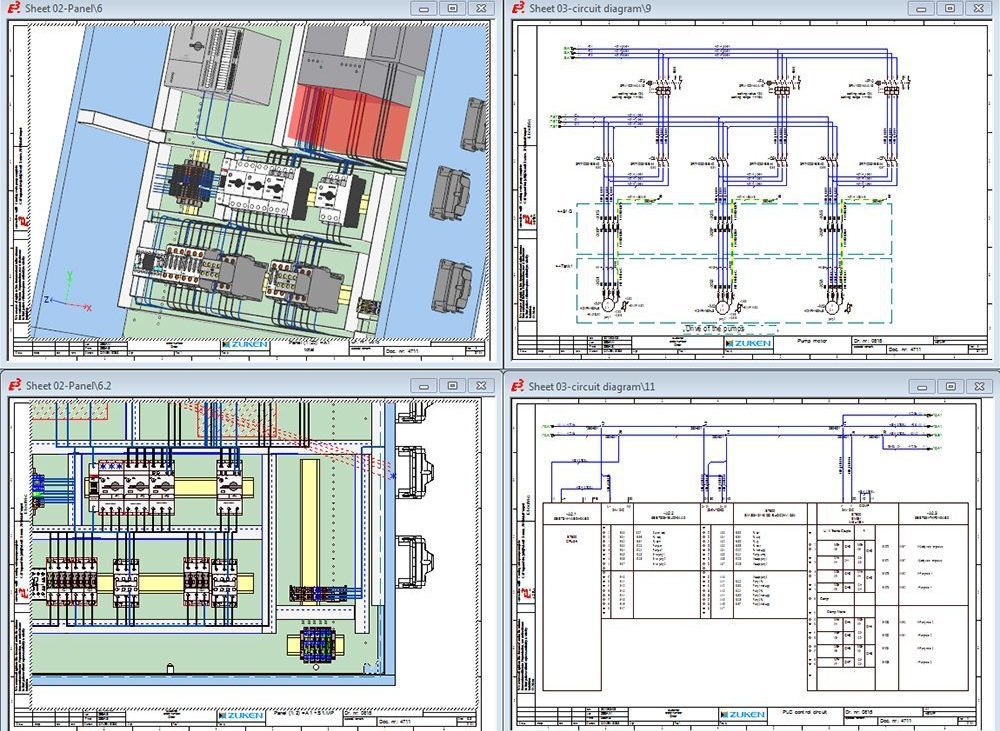Access Accurate Electrical Load Calculation Services for Large Project
Wiki Article
Cutting-edge Electric Design Services for Modern Framework
The advancement of contemporary facilities necessitates cutting-edge electric design services that not just boost functional efficiency however likewise address sustainability obstacles. As city environments expand significantly complex, integrating innovations such as clever grids and renewable power resources comes to be paramount. These advancements not just guarantee to optimize power consumption yet likewise foster resilience versus future demands. Nonetheless, the landscape of electrical design is undergoing quick change, motivating a better examination of arising trends and their ramifications for long-term facilities viability. What might the future hold for those who welcome these innovative methods?Value of Innovative Electrical Design
Ingenious electric design plays an essential function in modern-day framework, affecting not just efficiency but likewise sustainability. As cities progress and the need for energy boosts, the requirement for sophisticated electric systems comes to be extremely important. These systems should not only satisfy present demands however likewise expect future development and technical developments.A well-executed electric design can substantially minimize energy consumption, therefore decreasing functional costs and minimizing ecological influence. By integrating renewable power resources, such as solar panels and wind turbines, cutting-edge styles can enhance power self-reliance and resilience. Wise grid technologies permit for real-time tracking and management of power circulation, maximizing performance and minimizing waste.
Security is another essential aspect of electric design. Applying rigorous requirements and advanced modern technologies can reduce threats connected with electric failures, ensuring a safe and secure environment for citizens and businesses alike. Additionally, cutting-edge designs help with flexibility, allowing facilities to incorporate arising technologies effortlessly.
Trick Trends in Electrical Design
As the landscape of electric design remains to progress, numerous essential patterns are forming the future of the sector. One significant trend is the assimilation of smart innovation right into electrical systems. The proliferation of the Web of Things (IoT) has actually made it possible for real-time monitoring and control of electric devices, improving performance and facilitating anticipating upkeep.An additional trend is the expanding emphasis on modular design. This technique enables flexible and scalable options, making it possible for infrastructure to adjust to transforming needs without considerable remodellings. Additionally, the usage of advanced simulation tools and Building Information Modeling (BIM) is becoming increasingly prevalent, streamlining the design procedure and boosting cooperation amongst stakeholders.
Additionally, improvements in materials science are leading to the development of lighter, more sturdy, and energy-efficient parts. This technology is specifically crucial for high-performance buildings and infrastructure tasks.
Last but not least, there is a significant shift in the direction of data-driven decision-making - residential electrical design. Leveraging information analytics assists designers maximize systems for efficiency and cost-effectiveness. Together, these trends indicate a transformative age in electrical design, enhancing capability, sustainability, and strength in contemporary infrastructure
Lasting Energy Solutions
Lasting power services are increasingly coming to be a vital emphasis in electrical design, showing a more comprehensive dedication to environmental duty and resource performance. These options aim to minimize ecological effect while optimizing power consumption in numerous facilities, from residential structures to large business centers.One of the foremost approaches includes the assimilation of sustainable power sources, such as photovoltaic panels and wind generators, into electric systems. This not just decreases dependence on fossil fuels however additionally enhances energy strength. Additionally, ingenious power storage space systems, such as advanced batteries, allow reliable management and distribution of energy, ensuring that surplus energy produced throughout peak production can be used throughout high need durations.
Furthermore, energy-efficient design techniques are being taken on to improve overall system performance. This includes using energy-efficient lights, HVAC systems, and smart structure modern technologies that keep track of and adjust power use based upon tenancy and ecological problems.
Smart Grid Technologies
The implementation of sustainable energy solutions naturally results in the exploration of smart grid innovations, which play a critical function in updating electrical systems. Smart grids take advantage of advanced communication technologies and data analytics to enhance the reliability, efficiency, and sustainability of electrical power distribution. By integrating digital modern technology with typical grid framework, these systems promote real-time tracking, automated control, and boosted decision-making capacities.Among the crucial functions of smart grids is their ability to suit eco-friendly power sources, such as solar and wind power. This adaptability not just lowers reliance on fossil fuels but additionally enables a much more decentralized energy manufacturing design. Smart grids make it possible for demand response programs, where customers can adjust their power usage based on real-time rates, electrical design services consequently promoting power conservation and reducing peak tons demands.
In addition, smart grid modern technologies improve grid strength by allowing quicker identification and resolution of failures, ultimately lessening downtime. With predictive upkeep and analytics, utilities can enhance and optimize operations solution delivery. As cities and areas remain to progress, smart grid modern technologies are necessary for building a efficient and lasting electrical infrastructure that fulfills the demands of modern culture.

Future-Proofing Infrastructure
To guarantee long-term practicality and adaptability, future-proofing framework is vital in the rapidly advancing landscape of electrical design services. As modern technology developments and energy needs shift, it is vital that electrical systems are made with versatility in mind. This requires integrating scalable remedies that can fit future upgrades without demanding considerable overhauls.
Furthermore, sustainability must be a keystone of future-proofed designs. Using eco-friendly energy resources, such as solar and wind, and optimizing energy performance reduce reliance on nonrenewable fuel sources, aligning with international initiatives to fight environment modification.
Final Thought
Finally, innovative electrical design solutions play a pivotal function in forming modern-day infrastructure. By prioritizing performance, adaptability, and sustainability, these solutions address the progressing demands of power systems. The assimilation of smart grid technologies and sustainable energy options boosts strength and reduces functional expenses. Future-proofing framework via sophisticated simulation tools and modular techniques makes sure that electric systems stay responsive to altering requirements, eventually contributing to an extra sustainable and energy-independent future.A well-executed electric design can considerably reduce energy usage, therefore decreasing functional expenses and minimizing ecological impact. By including eco-friendly energy sources, such as solar panels and wind turbines, cutting-edge layouts can improve power self-reliance and resilience. In addition, ingenious power storage space systems, such as advanced batteries, make it possible for effective monitoring and distribution of energy, ensuring that excess power generated throughout peak manufacturing can be utilized throughout high need periods.
Clever grids allow need reaction programs, where customers can adjust their power usage based on real-time rates, thus advertising energy preservation and reducing peak tons demands. (electrical engineering design services)
As modern technology advancements and power needs shift, it is vital that electrical systems are created with adaptability in mind.
Report this wiki page